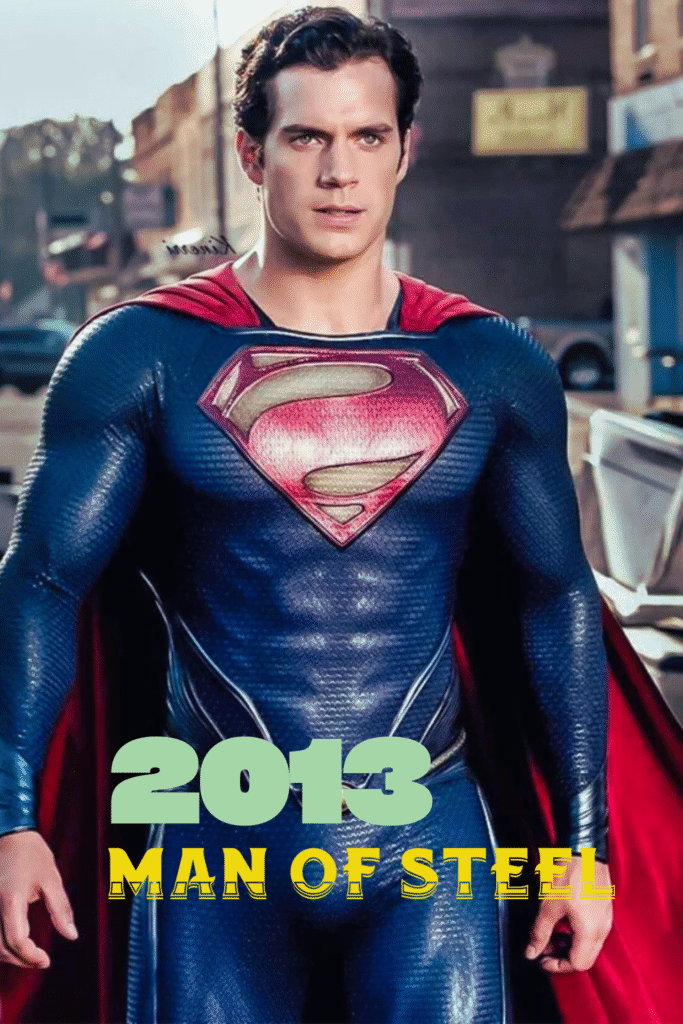Superman isn’t just another comic book hero — he’s the superhero who started it all. So, when Zack Snyder, David Goyer, and Christopher Nolan teamed up for Man of Steel in 2013, expectations were skyrocketing. The result? A movie that divided audiences like no other. For some, it was a breathtaking reimagining of Superman. For others, it was cold, noisy, and emotionally distant. But whether you love it or hate it, one thing is undeniable: Man of Steel had a distinct vision, and it refused to play it safe.
The Genesis of Man of Steel
Interestingly, Man of Steel didn’t come from a planned strategy. David Goyer, co-writer of The Dark Knight trilogy, suffered from writers’ block while working on The Dark Knight Rises. To overcome that slump, he revisited old Superman comics. Out of that casual exploration came a new idea for The Last Son of Krypton. When Goyer shared his idea with Christopher Nolan, the Inception director immediately saw the potential. He even pitched it to Warner Bros.
Christopher Nolan’s Influence
Christopher Nolan had no intention of directing a Superman movie, but his fingerprints are all over Man of Steel. His radical approach to storytelling influenced the film’s DNA – setting Superman in a “real world” context. Imagine Superman not as a comic-book character but as an event that would reshape human history. That’s the Nolan touch.
Zack Snyder Joins the Project
When Nolan called Zack Snyder to direct, Snyder was hesitant at first. But the opportunity to reinterpret Superman in a way no one had done before was irresistible. Known for 300 and Watchmen, Snyder brought his signature visual flavor: slow-motion action, symbolic imagery, and epic scale.
The Creative Trio: Snyder, Nolan, and Goyer
This film was a blend of three different creative voices:
Nolan brought realism and gravity.
Goyer brought comic book lore and story structure.
Snyder brought visuals, emotion, and operatic intensity.
Together, they gave us a Superman story that felt fresh, bold, and mythic.
Man of Steel’s Story and Themes
At its core, Man of Steel isn’t just about aliens and superpowers. It’s about identity, destiny, and the struggle between fear and hope. Clark Kent is trapped between two worlds: Krypton and Earth. His father, Jor-El, tells him to embrace his destiny, while Jonathan Kent warns him to hide his powers until Earth is ready. This conflict defines the film.
Superman as a Modern Myth
Snyder had already destroyed superheroes with Watchmen. With Man of Steel, he set out to reinvent Superman as a modern myth. Instead of a jolly Boy Scout, this Superman was a reluctant god – struggling with ethics, acceptance, and the burden of saving a world that feared him.
The Visual Style
Say what you will about Snyder, but his movies are never dull. Man of Steel is full of breathtaking scenes: Superman floating in front of the sun, his first flight, and the explosive Kryptonian battle. At the same time, the destruction of Metropolis in the third scene has sparked controversy. To some, it was too chaotic and exaggerated. To others, it was as if the gods were at war.
Hans Zimmer’s Epic Score
John Williams’ 1978 Superman theme is iconic, but Hans Zimmer knew he couldn’t replicate it. Instead, he created something entirely new – raw, thunderous, and emotional. Tracks like “Flight” gave Superman a sound that was more than a memory of memory, more than a sense of wonder.
The Film’s Strengths
A bold new take on Superman
Emotional storytelling based on a father-son dynamic
Zimmer’s unforgettable score
Epic scale and breathtaking visuals
The Film’s Flaws
The Codex subplot complicates things unnecessarily
Structural pacing feels uneven
The climactic destruction is overwhelming and divisive
Audience Reception
And this is where things get complicated. Fans of Superman’s optimistic, hopeful tone found Snyder’s version too dark and joyless. But those who embraced it saw a Superman who felt stronger, more conflicted, and more human than ever. Love it or hate it, no one was indifferent.
Man of Steel’s Legacy in the DCEU
This movie was created to kick off the DC Extended Universe (DCEU). Without Man of Steel, there would have been no Batman v Superman or Justice League. It set the template for darker, more serious superhero movies, even if subsequent films struggled to live up to its ambitions.
Personal Reflection
Personally, Man of Steel is a movie that leaves a mark on your mind with each viewing. You may be surprised the first time you see it. But on re-watching it, its depth, themes, and emotional pulse become clear. It is a movie that asks you to not just enjoy it, but to engage with it.
Conclusion
Man of Steel may not be perfect, but it is unforgettable. Snyder, Nolan and Goyer took risks, giving Superman a new identity for the modern world. And while the film is divisive, its ambition, visuals and emotional core ensure its place in the history of superhero cinema.
FAQs
- Why was Man of Steel so controversial?
Because it reimagined Superman as a dark, conflicted hero, rather than the optimistic symbol fans were used to.
- Did Christopher Nolan almost direct it?
No, Nolan helped develop the story and produce it, but he never wanted to direct.
- How does it compare to James Gunn’s Superman films?
Gunn’s ideas are lighter and more fun, while Snyder’s are heavier, more mythic, and more epic.
- Is Hans Zimmer’s score better than John Williams’?
Williams’ theme is iconic, but Zimmer creates a fresh, emotional sound that perfectly suits Snyder’s Superman.
- Why do fans revisit Man of Steel after so many years?
Because it has a depth, symbolism, and level of emotion that makes it worth revisiting.
Please be sure to leave a review.
